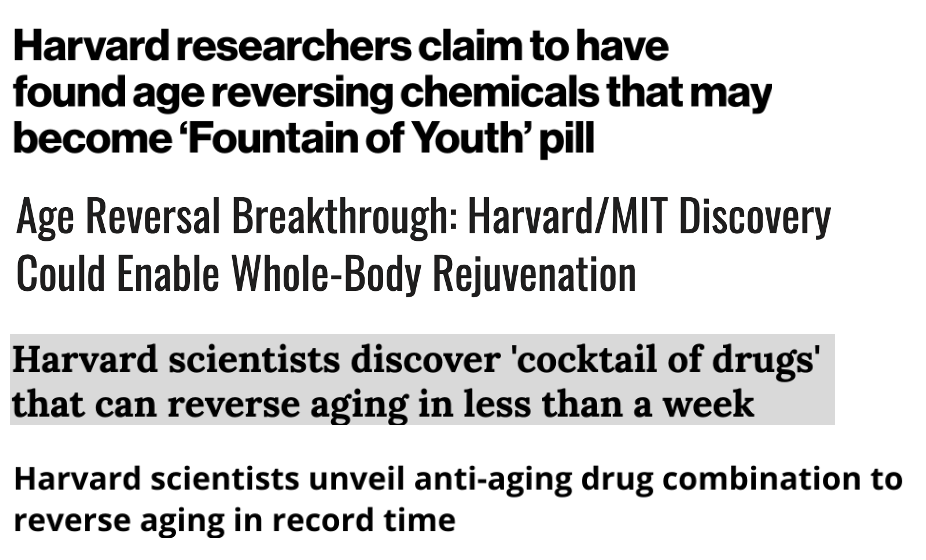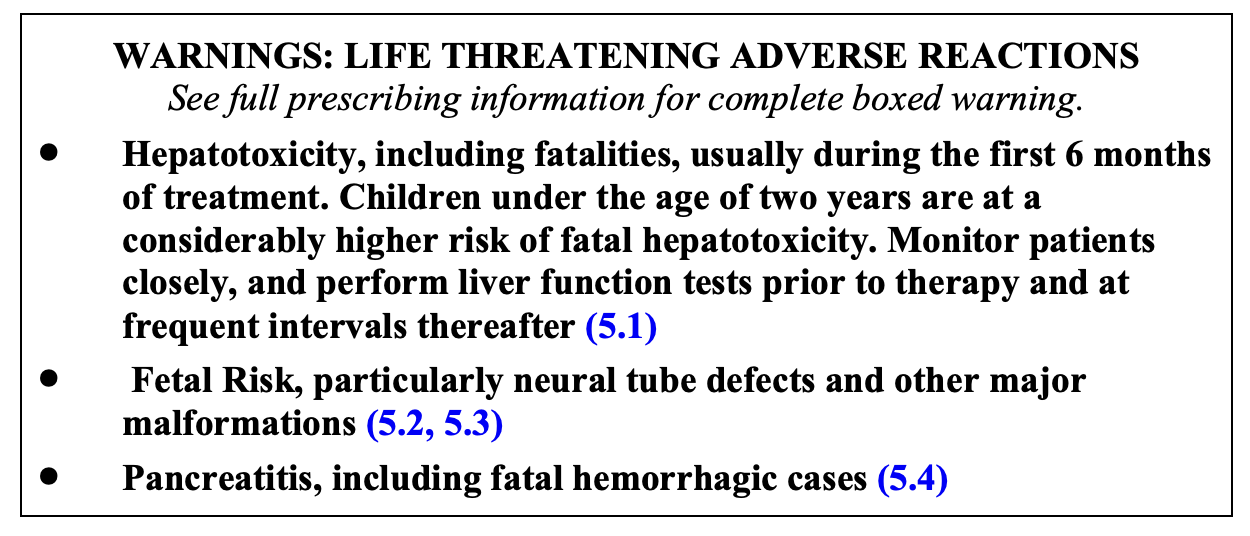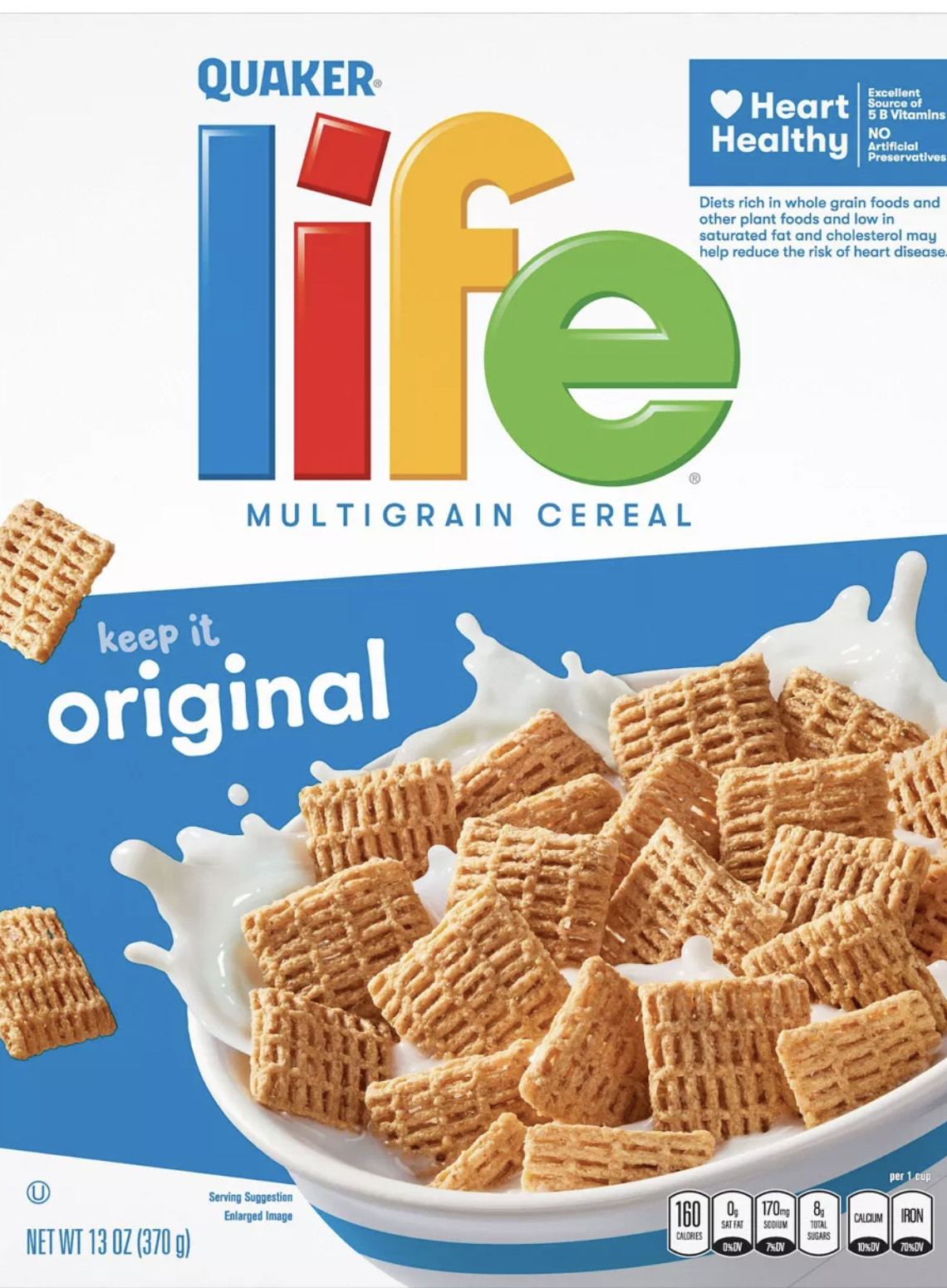
"Chemically induced reprogramming to reverse cellular aging" is the title of a paper that recently appeared in the journal Aging. The press got ahold of it, and the results were predictable:

You might want to pause for a reality check before you race out to buy another 50 years' worth of life insurance. Are there really cocktails of known drugs that will extend your life significantly? Perhaps. Especially if you happen to be a mouse cell in a culture medium (1).
As a former medicinal chemist working in drug discovery, I cannot possibly express how far an experimental drug with some sort of activity in a cell-based assay is from making it to the pharmacy. These drug cocktails haven't even been tested in living mice, let alone people. And when you're researching a novel therapy – a treatment for a disease or condition with no medical precedent – the odds get longer still. Considering the Harvard group is trying to treat aging, in my opinion, this is a really long shot. Yet Dr. David Sinclair, the lead scientist of the project (and also on the paper), is optimistic.
“We’re talking about taking someone who’s old or sick and making their whole body or a specific organ young again, so the disease goes away... It’s a big idea. It’s not how we typically do medicine.”
David Sinclair, Ph.D., in an interview with News Medical
Big doesn't mean successful
Other scientists are not so confident. Dr. Matt Kaeberlein, a biogerontologist and Former Director of the Healthy Aging and Longevity Research Institute at the University of Washington, believes that Sinclair's claims are being made too soon:
"They should have validated at least one of these cocktails in an animal and shown improvements in age-related health metrics or lifespan before making these claims about effects on biological aging."
Dr. Matt Kaeberlein
And Dr. Charles Brenner, the Alfred E. Mann Family Foundation Chair in Diabetes and Cancer Metabolism at City of Hope National Medical Center, who has had a beef with Sinclair in the past, focuses on the use of some of the drugs in the cocktail:
"[T]he cocktail contained compounds that can put people at risk and are 'generally not safe alone or in a combination."'
Dr. Charles Brenner
While I agree with both Kaeberlein and Brenner, as a chemist, it is Brenner's opinion that sums it up best. What does he mean by "generally not safe?" If you look at Supplementary Table 1, you'll find the 25 drugs/chemicals used to make up the six different cocktails used to evaluate anti-aging properties (2) in mouse cells. There are some real doozies in there.
- Sodium butyrate is simply the salt form of butyric acid, the chemical that gives vomit its lovely aroma. The two are interconvertible depending on pH. Your stomach is already chock full of vomit, and therefore butyric acid. It is hard to imagine how taking a little bit more is going to affect anything.
- Valproic acid (Depakote) is used for seizures, bipolar disorder, and migraines... This is a serious medicine with serious side effects, which earned it a black box warning in 2006:

Source: FDA
-
Tranylcypromine (Parnate) was first synthesized in 1946 as an analog of amphetamine. Later it was discovered to have antidepressant properties and was marketed as such in the early 1960s. Tranylcypromine is a monoamine oxidase (MAO) inhibitor, which can cause serious interactions with certain foods and drugs. Tranylcypromine is not a first-choice drug for depression; it is indicated only when other antidepressants fail. The drug has multiple side effects, drug-drug, and drug-food interactions and is contraindicated for people with several medical conditions.
-
Rapamycin (Sirolimus) is an immunosuppressive drug used to prevent organ rejection following transplants and is also used against certain cancers. A fascinating article on the Big Think site explains its long and complex history (which also includes anti-aging research in mice).
Bottom line
In my opinion, the chances that the Sinclair cocktails eventually become a therapy that impacts aging in humans are low, probably very low. Had the group demonstrated a real effect in mice or (preferably) a second species as well, I would have been intrigued. But I would still be troubled by more than a few drugs (and the vomit) in the list of 25 that were tested. There are some drugs with serious effects and side effects in that group that will (presumably) be taken on a chronic basis. This alone raises a red flag for safety studies in humans, especially for those already taking certain medications or with comorbidities. In other words, the elderly.
Given my rapidly encroaching decrepitude, I sure wouldn't mind a tune-up for my cells and organs or maybe a few more years before taking the eternal dirt nap. But I just don't see this coming to fruition anytime soon, if ever. If I'm looking for some extra life, my options are rather limited:

NOTES:
(1) ChatPCT: "Cultured cells, also known as cell cultures, are grown and maintained outside their natural environment in a controlled laboratory setting. They serve as valuable tools in various fields of research, biotechnology, and medicine."
(2) There are several genetic markers for DNA damage and aging. These are explained in detail in the Sinclair paper but are not within the scope of this article.



